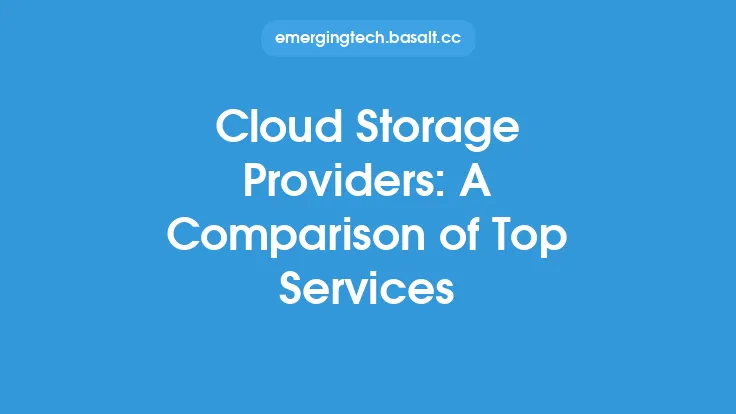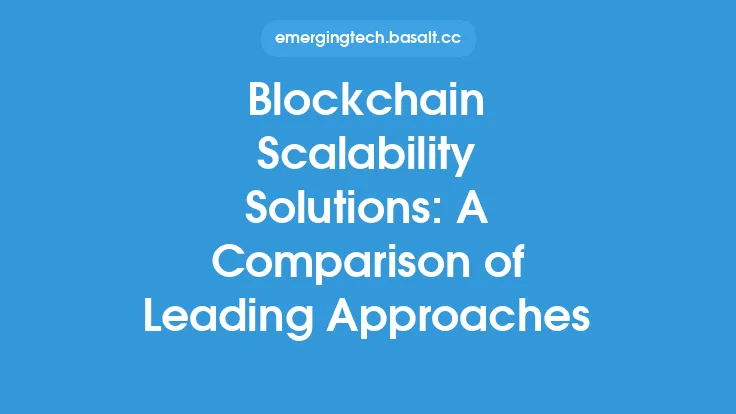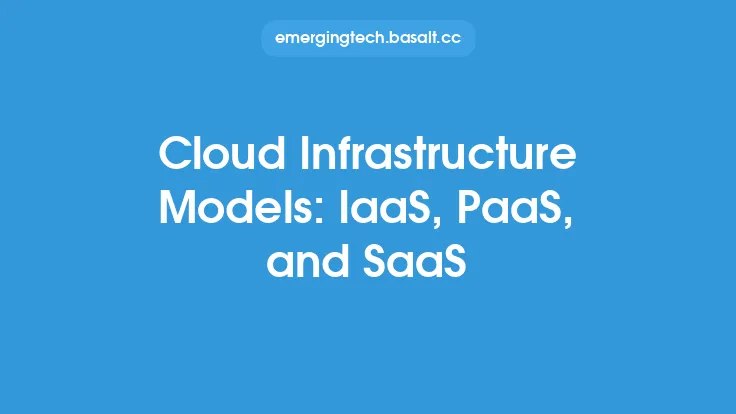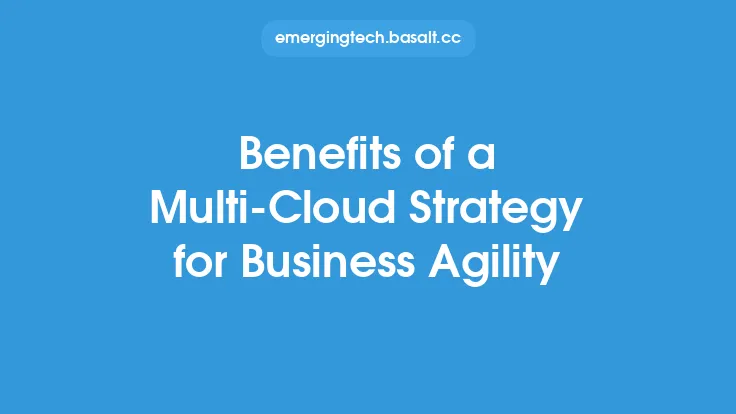The cloud infrastructure market has experienced significant growth in recent years, driven by the increasing demand for scalable, flexible, and cost-effective computing resources. As a result, several leading players have emerged, offering a range of cloud infrastructure services to meet the diverse needs of businesses and organizations. In this article, we will compare the leading cloud infrastructure providers, highlighting their strengths, weaknesses, and key features.
Introduction to Leading Cloud Infrastructure Providers
The leading cloud infrastructure providers include Amazon Web Services (AWS), Microsoft Azure, Google Cloud Platform (GCP), IBM Cloud, and Oracle Cloud. Each of these providers offers a unique set of services and features, making them suitable for different types of businesses and use cases. AWS, for example, is the largest and most mature cloud infrastructure provider, offering a wide range of services, including compute, storage, database, and analytics. Microsoft Azure, on the other hand, is a close second, with a strong focus on enterprise customers and a wide range of services, including artificial intelligence, machine learning, and Internet of Things (IoT).
Comparison of Cloud Infrastructure Services
When comparing the leading cloud infrastructure providers, several key factors come into play, including compute services, storage services, database services, security, and pricing. In terms of compute services, AWS offers a wide range of instance types, including virtual machines, containers, and serverless computing. Microsoft Azure, on the other hand, offers a similar range of compute services, with a strong focus on hybrid cloud deployments. GCP, meanwhile, offers a more limited range of compute services, but with a strong focus on machine learning and artificial intelligence.
In terms of storage services, AWS offers a wide range of options, including object storage, block storage, and file storage. Microsoft Azure, similarly, offers a range of storage options, including blob storage, file storage, and disk storage. GCP, meanwhile, offers a more limited range of storage options, but with a strong focus on data analytics and machine learning.
Security and Compliance
Security and compliance are critical factors when choosing a cloud infrastructure provider. All of the leading providers offer a range of security features, including encryption, firewalls, and access controls. AWS, for example, offers a wide range of security services, including AWS IAM, AWS Cognito, and AWS Inspector. Microsoft Azure, similarly, offers a range of security services, including Azure Active Directory, Azure Security Center, and Azure Sentinel. GCP, meanwhile, offers a more limited range of security services, but with a strong focus on data encryption and access controls.
In terms of compliance, all of the leading providers offer a range of certifications and compliance frameworks, including PCI-DSS, HIPAA, and GDPR. AWS, for example, offers a wide range of compliance certifications, including PCI-DSS, HIPAA, and GDPR. Microsoft Azure, similarly, offers a range of compliance certifications, including PCI-DSS, HIPAA, and GDPR. GCP, meanwhile, offers a more limited range of compliance certifications, but with a strong focus on data privacy and security.
Pricing and Cost Optimization
Pricing and cost optimization are critical factors when choosing a cloud infrastructure provider. All of the leading providers offer a range of pricing models, including pay-as-you-go, reserved instances, and spot instances. AWS, for example, offers a wide range of pricing models, including pay-as-you-go, reserved instances, and spot instances. Microsoft Azure, similarly, offers a range of pricing models, including pay-as-you-go, reserved instances, and spot instances. GCP, meanwhile, offers a more limited range of pricing models, but with a strong focus on cost optimization and discounts for committed usage.
In terms of cost optimization, all of the leading providers offer a range of tools and services, including cost estimation, cost monitoring, and cost optimization. AWS, for example, offers a wide range of cost optimization tools, including AWS Cost Explorer, AWS Budgets, and AWS Cost and Usage Reports. Microsoft Azure, similarly, offers a range of cost optimization tools, including Azure Cost Estimator, Azure Cost Analysis, and Azure Reserved VM Instances. GCP, meanwhile, offers a more limited range of cost optimization tools, but with a strong focus on cost estimation and cost monitoring.
Conclusion
In conclusion, the leading cloud infrastructure providers offer a range of services and features, making them suitable for different types of businesses and use cases. When choosing a cloud infrastructure provider, several key factors come into play, including compute services, storage services, database services, security, and pricing. By understanding the strengths and weaknesses of each provider, businesses and organizations can make informed decisions about which provider best meets their needs. Ultimately, the choice of cloud infrastructure provider will depend on a range of factors, including business requirements, technical expertise, and budget. By carefully evaluating these factors and choosing the right provider, businesses and organizations can unlock the full potential of cloud infrastructure and achieve their goals.





